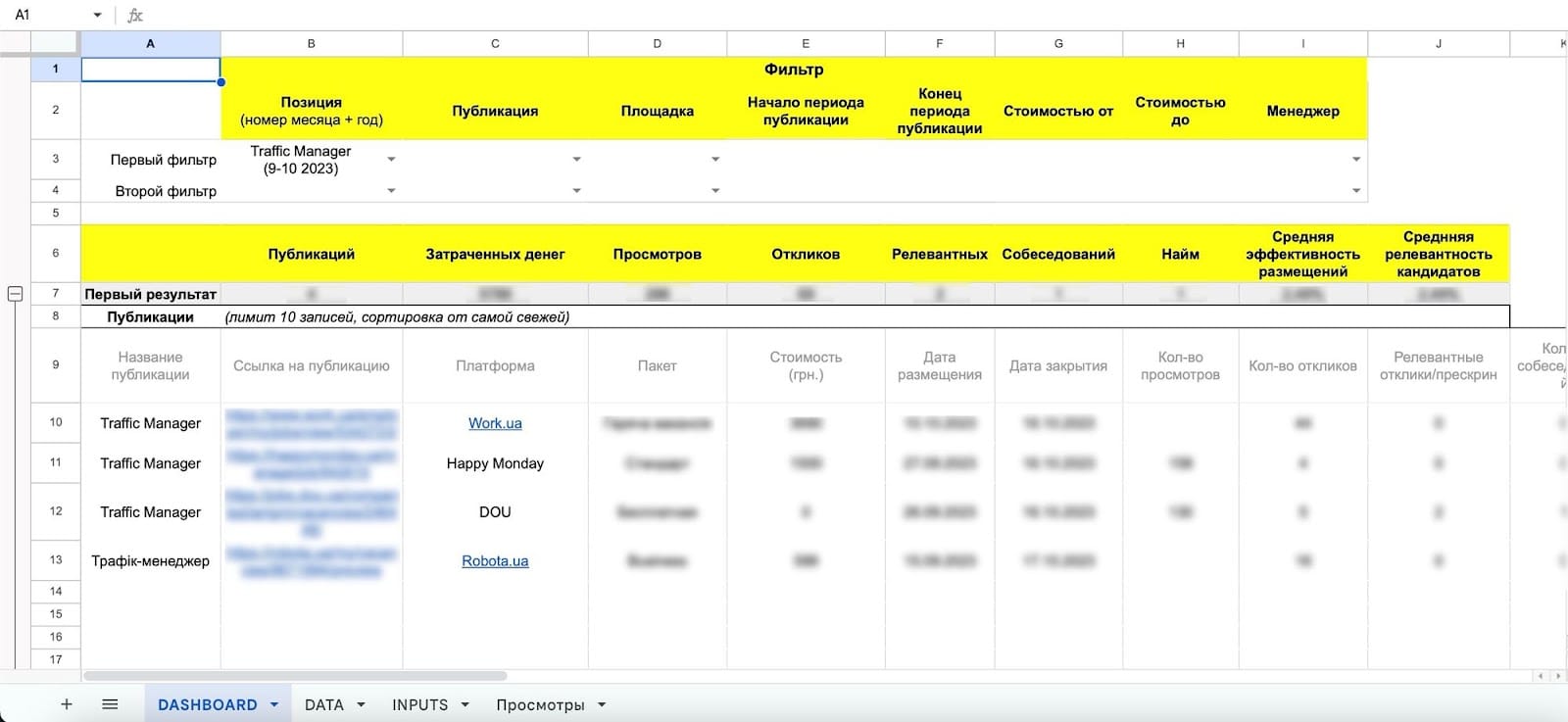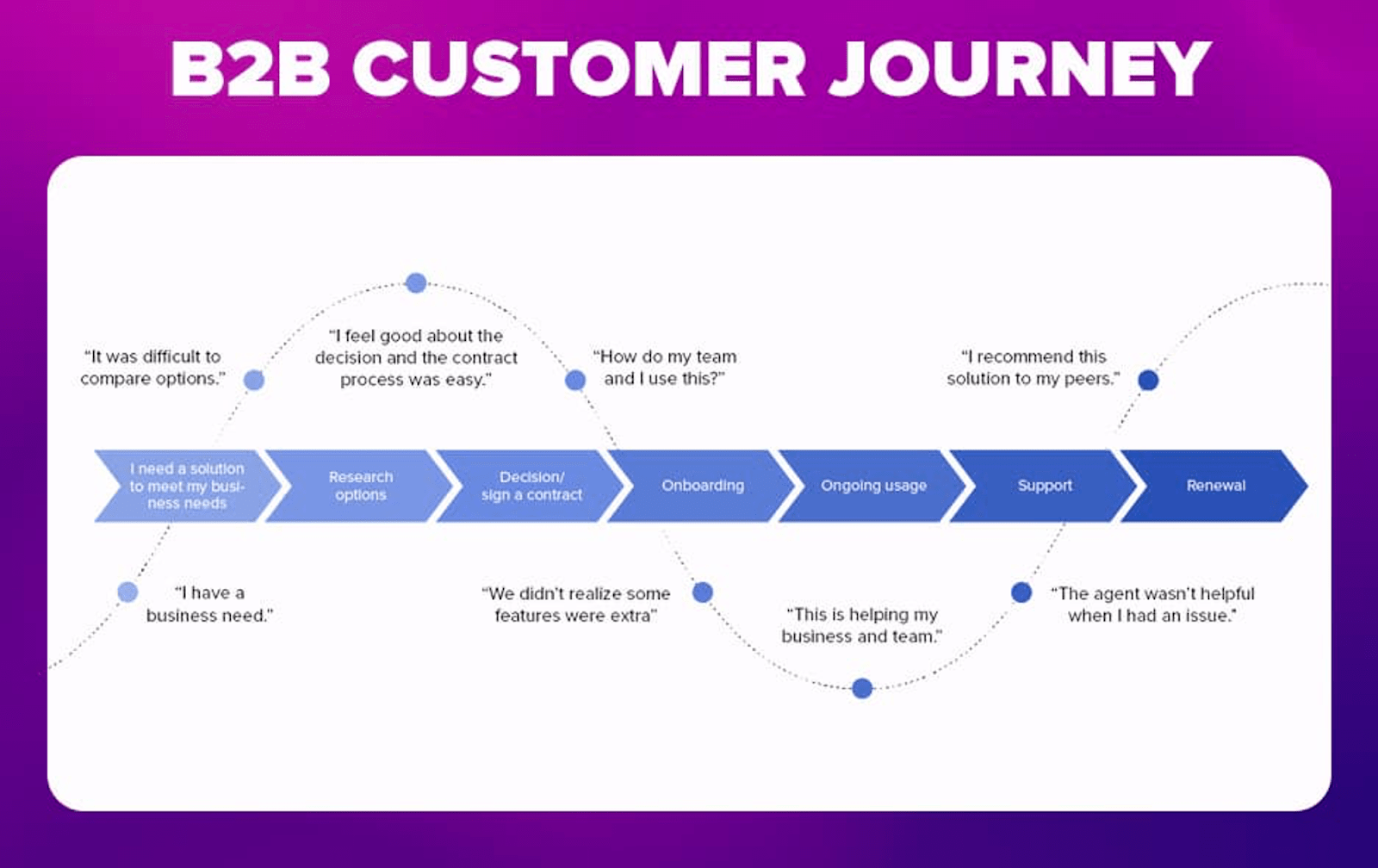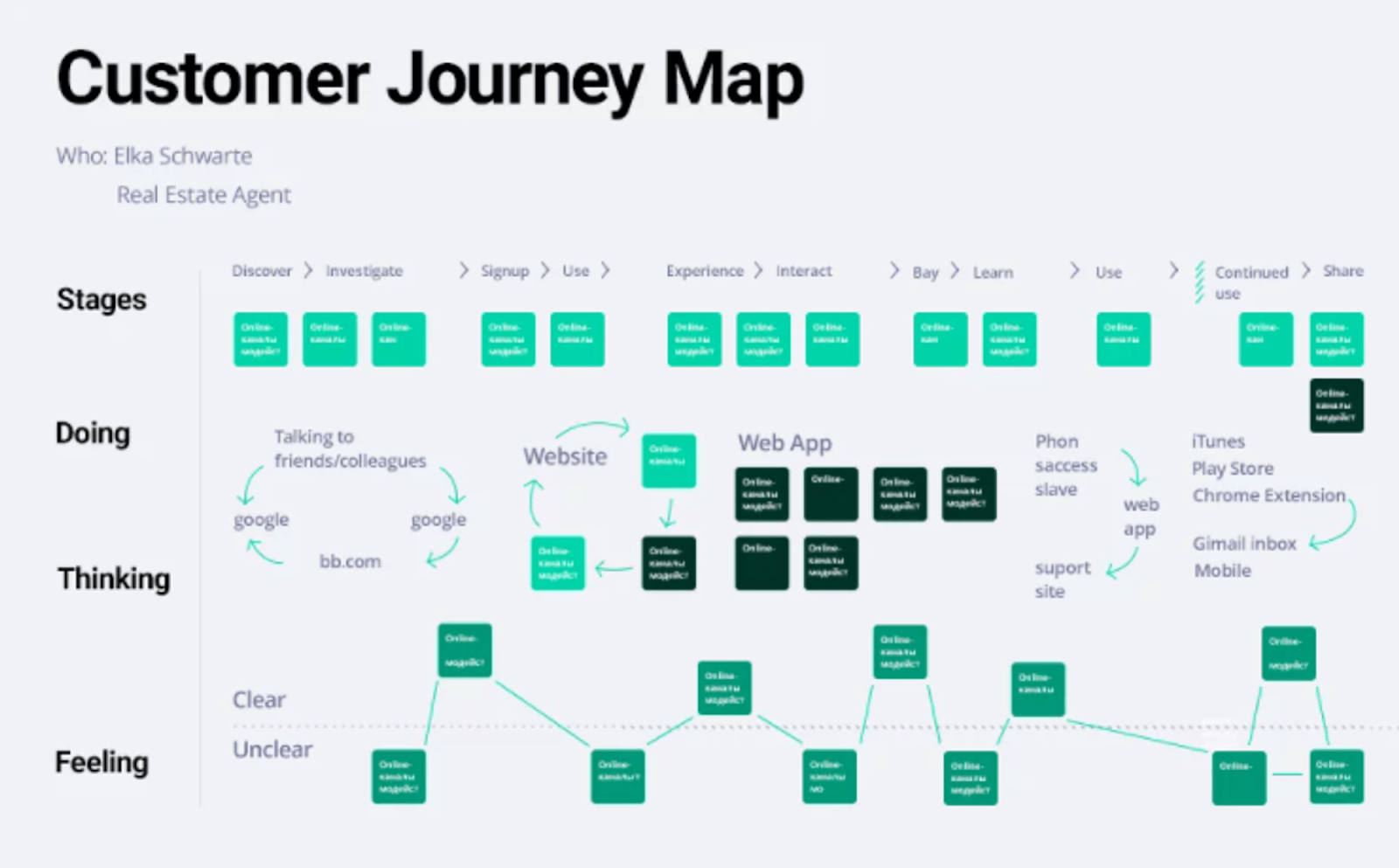Overcoming Challenges in Recruiting Data Collection: Effective Use of Google Sheets

In today’s world, data management has become an integral part of any business process, including recruitment. Companies face the need to analyze the effectiveness of different recruitment channels to optimize processes and improve efficiency.
In this article, we will explore how the problem of collecting and analyzing recruitment data can be solved using a simple yet powerful tool—Google Sheets.
Identifying the Problem in Recruitment and Analyzing Solutions
The problem our company faced was the lack of systematized information about recruitment channels. This created difficulties in evaluating the effectiveness of different platforms and methods for attracting candidates. Without a clear understanding of which channels are effective, it is challenging to optimize resources and plan future recruitment activities.
Problems Identified During the Process:
Comparative Table of Solutions
In the process of selecting appropriate tools to create a unified system for tracking recruitment statistics, various platforms were considered. A key aspect was the ability of these platforms to integrate, ensuring a single point of access to data.
The table below presents popular recruitment platforms and their ability to integrate with other tools, which is crucial for creating a multifunctional dashboard:
We decided to develop a dashboard in Google Sheets because it allows us to start systematizing and analyzing data quickly and with minimal costs.

Creating a Database in Google Sheets
Choosing Google Sheets as the main tool for creating a database and dashboard for analyzing recruitment data was driven by several key factors:
For comparison, here are the annual costs for 20 employees across various similar services:
Example of Implementing Google Sheets in Recruitment
In practice, creating a database begins with identifying key metrics that need to be tracked. In our case, this includes data on recruitment channels, positions, the number of applications submitted, sources of candidate attraction, and their effectiveness. Then, tables are created that systematize this data by various parameters, such as publication date, platform, number of views, responses, interview invitations, and successful hires.
For each job posting, data entry is configured for the breakdowns needed for analysis in the dashboard. For example, data on the number of views and responses are entered for each platform. This allows recruiters not only to see the overall picture but also to analyze the effectiveness of each channel dynamically.
Google Sheets proved to be the ideal tool for creating a unified system for collecting and analyzing recruitment data. It provides flexibility, scalability, and the ability to collaborate, which is crucial for the dynamic requirements of modern business processes in human resources management.
How We Applied Google Sheets to Recruitment Processes
To solve the problem of data collection and analysis in recruitment, we used the following approach:
- We first clarified with the clients and end users exactly what data they needed and what metrics they wanted to see on the dashboard. This helped us clearly understand what information and in what format we needed to provide.
- We then studied how and where the data was currently stored. It could be scattered across different documents, notebooks, or even in digital format on various platforms.
- We created a unified database to systematically collect all the necessary information. This ensured the unification and accessibility of the data.
- Finally, we developed a dashboard that allowed for the visualization of the collected data in a format convenient for analysis, according to the client’s requirements.
These steps represent a simple and consistent path to creating an effective system for analyzing recruitment activities. If we were to recommend this process to someone facing a similar problem, we would suggest following the same plan, paying special attention to clearly defining requirements and systematizing data.
Plus a List of Useful Materials to Review:
What is a User Story and How to Create It
User Interviewing—How and Why?
Turning User Research into User Stories
HOW TO WRITE BETTER USER STORIES TO BUILD BETTER PRODUCTS
How to Write User Stories That Matter
Standardization of Publication Format for Effective Recruitment
In conclusion, we developed a unified publication format for all recruitment platforms. Each publication now includes key job vacancy data, such as the title, a link for easy access, and the posting platform, which is one of the mandatory requirements.
Additionally, we considered the conditions and costs of posting on each platform to understand the financial expenses of recruitment. An important part was the static data: publication activity dates, which allow filtering information by time periods and analyzing effectiveness based on views, responses, screening results, interviews, and hires. These parameters are critical for understanding the candidate selection process and are standard for recruitment.
To add transparency to the team’s work, each publication included a "Responsible Recruiter" field and a recruiter comment. This allows comparing the effectiveness of individual managers within the team, making the process more organized and understandable for analysis.
The Biggest Challenge in Developing the Dashboard
During the creation of the recruitment dashboard, challenges related to the human factor arose, particularly with misunderstandings of requirements by the recruitment team. The initial prototype of the dashboard, quickly developed to demonstrate the concept, was not understood by the team due to differences in their vision of the recruitment process. This led to a conflict of views and slowed the project’s progress.
Recognizing this problem emphasized the importance of thorough requirement gathering and analysis before starting development. Interaction and detailed clarification of requirements with the recruitment team could have prevented many difficulties. The approach to forming the technical specification should include specific questions about functions, automation processes, and important data needed for analyzing recruitment effectiveness.
Top 10 Questions for Recruiters When Forming a Technical Specification for Creating a Dashboard:
What problem needs to be solved, and why did it arise?
Is there a current solution, or were any solutions planned previously? Why are current solutions unsatisfactory/why did past solutions fail?
What functional capabilities do you expect from the finished solution? Describe how you want to work with it and what you want to achieve as a result.
With which other tools should the solution be synchronized?
What information needs to be collected and how should it be analyzed?
Which processes should be prioritized for automation? Is it possible to use paid automation services?
How do you evaluate the success of your recruitment efforts?
What are the data security requirements?
What aspects of usability are critical for you (platforms, free basis, etc.)?
What specific features of your department's work should be considered during development?
Additionally, these articles can help eliminate misunderstandings between recruiters and product developers:
How to Get Client Feedback into Your Dev Process
How to Utilize User Feedback for Software Development
What Are the Best Practices for Responding to User Feedback in Software Development?
User Feedback, an Ultimate Guide: How to Collect and Make It Valuable Every Time
7 Steps to Perform User Feedback Analysis for Software Development
Correctly defining and understanding the expectations of all stakeholders from the start of the project is key to successful implementation and reducing the risk of misunderstandings within the team.


Can the Existing Solution Be Improved?
There’s always room for improvement and enhancement. The initial task was for specialists to analyze data in a unified space and receive information faster to evaluate candidates. In the next version of the product, data export from various platforms to separate databases could be automated.
How to Implement Additional Improvements in Dashboard Development in Google Sheets?
For the project’s implementation, we would first research the API capabilities of different platforms. This would include communication with platform managers to ensure support and assistance in integration. Then, we would consider using third-party automation tools like Make, Zapier, and Apix Drive, which could help gather the necessary statistics directly from the platforms.
We would also assess the possibility of integrating with HRM systems through their APIs to track candidate progress after their interaction with the platforms. For platforms without an API, such as Happy Monday, alternative data collection methods might need to be explored, possibly through creating specialized forms or continuing manual work.
Additionally, the possibility of using data parsing as an alternative method for collecting information from platforms that are difficult to integrate via API would be considered. Parsing can serve as an additional way to research and collect data, especially when standard methods prove unavailable.
Necessary Skills and Knowledge for Developing a Recruitment Dashboard in Google Sheets
During the project implementation of creating a recruitment dashboard, we identified several critical skills essential for success. Understanding the recruitment process was foundational to successful work, strengthened by prior experience in this field. This knowledge helped us accurately determine which dashboard features would be most in demand by recruiters.
We also placed great emphasis on understanding human psychology, which is extremely important in a recruiter’s work. This allowed us to adapt tools to real user needs and make their use as effective as possible.
Technical Aspects of Implementation
From a technical standpoint, the ability to work with databases and Google Sheets formulas was crucial. We actively used the Query function to process and filter data in the dashboard. This allowed us to create a flexible tool that could adapt to various data analysis tasks. Using conditional operators and nested queries in Query significantly expanded the dashboard’s capabilities, making it not only functional but also scalable for future development.
To better understand Query, familiarize yourself with the following articles:
What Is an SQL Query?
The Almighty Query Function—A Detailed Guide
The Query Function
Power Query: Easy Data Work
QUERY—The Most Powerful Function in Google Sheets
What to Do Next with Data Collected by the Recruiter in Google Sheets
Use in Work: If you’re unsure how a recruiter should use the collected data, here are some helpful materials that can guide you on how to apply these numbers effectively:
15 Metrics for Recruitment and Sourcing Effectiveness: Methods for Evaluating Recruiter Performance in 2021
HR Metrics and Analytics for Data-Driven Decision Making
HR in 2024: HR Analytics and Data-Driven Decision-Making
How to Use Data to Improve HR Decision-Making
Building a Data-Driven HR Strategy: 10 Tried and Tested Tips
Conclusion
In the process of developing a recruitment dashboard, we faced various challenges, from technical aspects to understanding human psychology. Our experience in recruitment and a deep understanding of user needs enabled us to create an effective and adaptive tool that aids in optimizing hiring processes. We realized that successful project implementation requires a comprehensive approach: from accurately defining requirements to using advanced technical solutions.
This project emphasized the importance of collaboration, adaptability, and continuous learning in developing business tools, making it a valuable experience for our team and potentially an interesting solution for other companies in the recruitment field.

